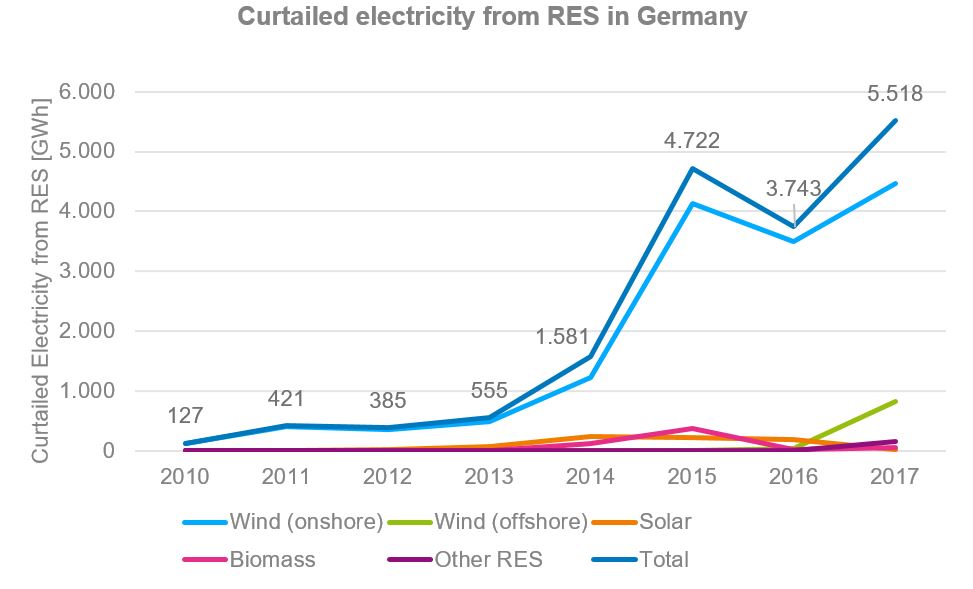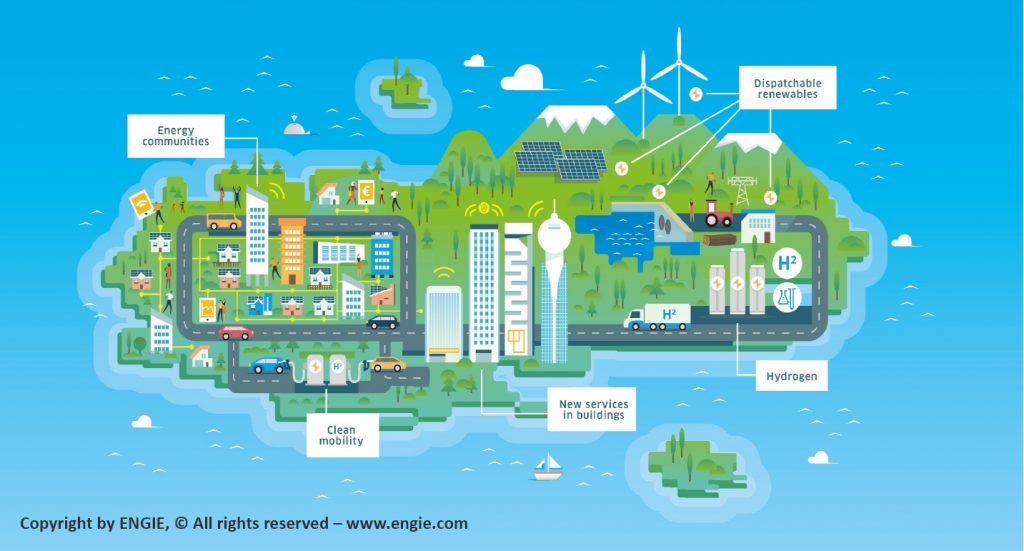‘Hydrogen is the renewable energy of the future’, one of my colleagues likes to say. I agree. It has incredible potential to overcome the many challenges that countries like Germany with a growing share of variable renewable energy are experiencing. Let me give you my impression on the future role of hydrogen.
Unlocking the potential of renewables in Germany
Germany is often seen as a model in the transition towards renewables. Wind turbines, solar PV panels and other renewable energy sources (RES) contributed about 38 percent to our power mix in 2017.
Most wind power is produced in Northern Germany and most solar power in the South. Yet, the largest power consumers are in Central and Southern Germany. This means electricity from RES must be transported on grids across long distances. But German grids are not prepared to meet this challenge, and major grid development projects are lagging behind. The Suedlink transmission line, for instance, will not be operational before mid of the 2020s.
In an effort to ensure grid stability, operators must regularly take corrective measures. They rely on redispatching conventional power plants and as a last measure, curtail power production from RES. In 2017 alone, cuts in RES amounted to 5.5 TWh. Consider that the net electricity production in Germany was 547 TWh in 2017.
Although technically necessary, RES curtailment is absurd from an economic point of view. German renewable energy law requires that the owners of RES plants be compensated for the curtailed electricity. In 2015 alone, compensation amounted to €478 million.

The scheduled phase-out of nuclear power plants by 2022 and the likely phase-out of coal-fired power plants will exacerbate this problem. The higher the share of renewables, the more necessary storage technologies become to ensure security of supply.
In Germany, the only large-scale storage technology available are pumped-storage power plants. But with around 40 GWh of capacity installed, this amount is insufficient to balance the seasonal fluctuations of a RES dominated energy system. Battery systems are not designed as long-term and large-scale storage solutions. Their potential lies in grid balancing services and peak shaving on a short-term scale of seconds to days.
Our energy systems require a technology that can store electricity on a TWh-scale. Yet, today only chemical storage technologies can provide the energy volumes needed on this scale. Clearly, we need other innovative solutions.
Transitions in mobility, residential and industrial sectors
We need to focus on energy transitions in the mobility, residential and industrial sectors. Together, they make up 51% of global greenhouse gas emissions. Diesel and gasoline are the main fuels we use for transportation. Oil and natural gas heat the majority of homes.
The direct use of electricity from renewables can reduce the carbon footprint in these sectors to a certain extent. Battery-electric vehicles, heat pumps and energy efficient insulation all help to reduce demand for oil and gas.
But some applications cannot be easily powered by electricity. Take heavy-duty transport and aviation for example. Electric battery systems suffer from too low energy densities, which limit the amount of payload available for cargo. Electric vehicles also take considerable time to charge compared to simply pumping gas.
How can we decarbonise these sectors and applications? This is where hydrogen comes into play.
Hydrogen is the missing link for a sustainable energy system
Hydrogen is the missing link that can enable the transition towards a 100% renewable energy system. Produced from RES with water electrolysis, green hydrogen is a zero-emission multi-purpose energy carrier.
Hydrogen can provide a seasonal and short-term storage option for RES. Hydrogen can either be re-electrified directly using fuel cells or hydrogen-optimised gas turbines with dedicated hydrogen infrastructure. Or hydrogen can be upgraded to synthetic methane (SNG) in the power-to-gas process and injected into the natural gas grid. This would allow the use of existing natural gas infrastructure without conversion, including gas power plants.
In conjunction with battery technology, hydrogen could power zero-emission transport. For vehicles with operational constraints such as heavy-duty transport, fuel cell electric vehicles (FCEV) can bridge the gap between battery electric vehicles (BEV) and those with conventional combustion engines. Fuel cells are also emerging in regional train transport while passenger vehicles show significant potential for FCEVs.
In residential heating, stationary fuel cells are an efficient option. As micro-combined heat and power plants (mCHP), stationary fuel cells produce heat and electricity, achieving combined fuel efficiencies of 80 to 90 percent. They run generally either on pure hydrogen or on natural gas. This is a big advantage especially in the early development phase, when no dedicated hydrogen infrastructure exists. Japan has strongly supported the market development of fuel cell mCHPs in recent years, installing more than 250,000 units.
In industrial applications, the first step is to replace the production of grey hydrogen from fossil fuels with green hydrogen. In Germany, several demonstration projects in refineries are currently underway. Depending on the electricity price, green hydrogen from water electrolysis can be cost-competitive compared to grey hydrogen. By further reducing the tax load on electricity for hydrogen production, green hydrogen can become a viable solution.
Hydrogen, from vision to reality
The vast array of Hydrogen-based solutions can help to complete the energy transition. Hydrogen technologies have made significant advancements in recent years and will contribute to a diverse mix of renewable energies and energy carriers.
Each country needs to tailor this mix to their unique demands and energy potential. Direct electrification should be pursued wherever reasonable to avoid additional conversion steps and improve system efficiencies.
This transition will require immense change to the way we use and produce energy. But this change is necessary in a world with rising temperatures, increasingly scarce resources and a rapidly growing population.
I think now is the time to act. We have the technology, and at Tractebel we are developing the expertise to turn the world’s green vision to reality.

Dear Mr. Knicker,
thanks for sharing your thoughts and insights on the potentials and the future role of green Hydrogen. Would be interesting to get to know your assessment of the next generation of solid state batteries.
Kind regards
Thorsten Meyer, Dipl.-Ing.
Dear Mr. Meyer,
thank you for your comment on the article.
Indeed, the next generation of solid state batteries can bring important benefits to battery-electric vehicles in terms of increased capacities (and thus driving distance) and reduced charging times. But while solid state batteries can extend the utilization inside the mobility sector, the remaining sectors (power, industry, heating) still rely on a low-carbon energy carrier as fuel, for storage or as feedstock. So I think solid-state batteries can be a part of the solution for the transition in mobility, and the potential of hydrogen for sector coupling remains high.
Best regards
Felix Knicker
Well analyzed reviewed.